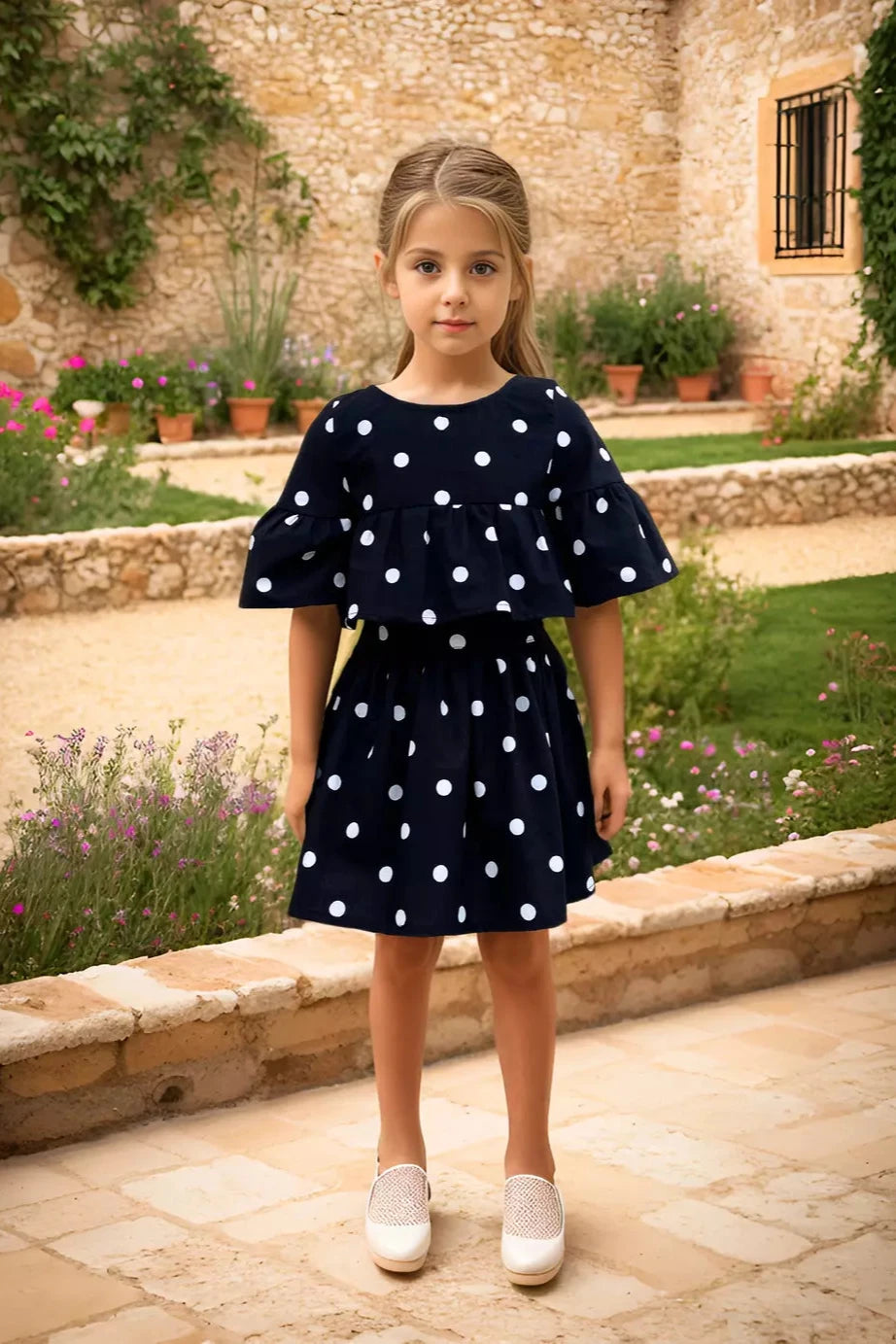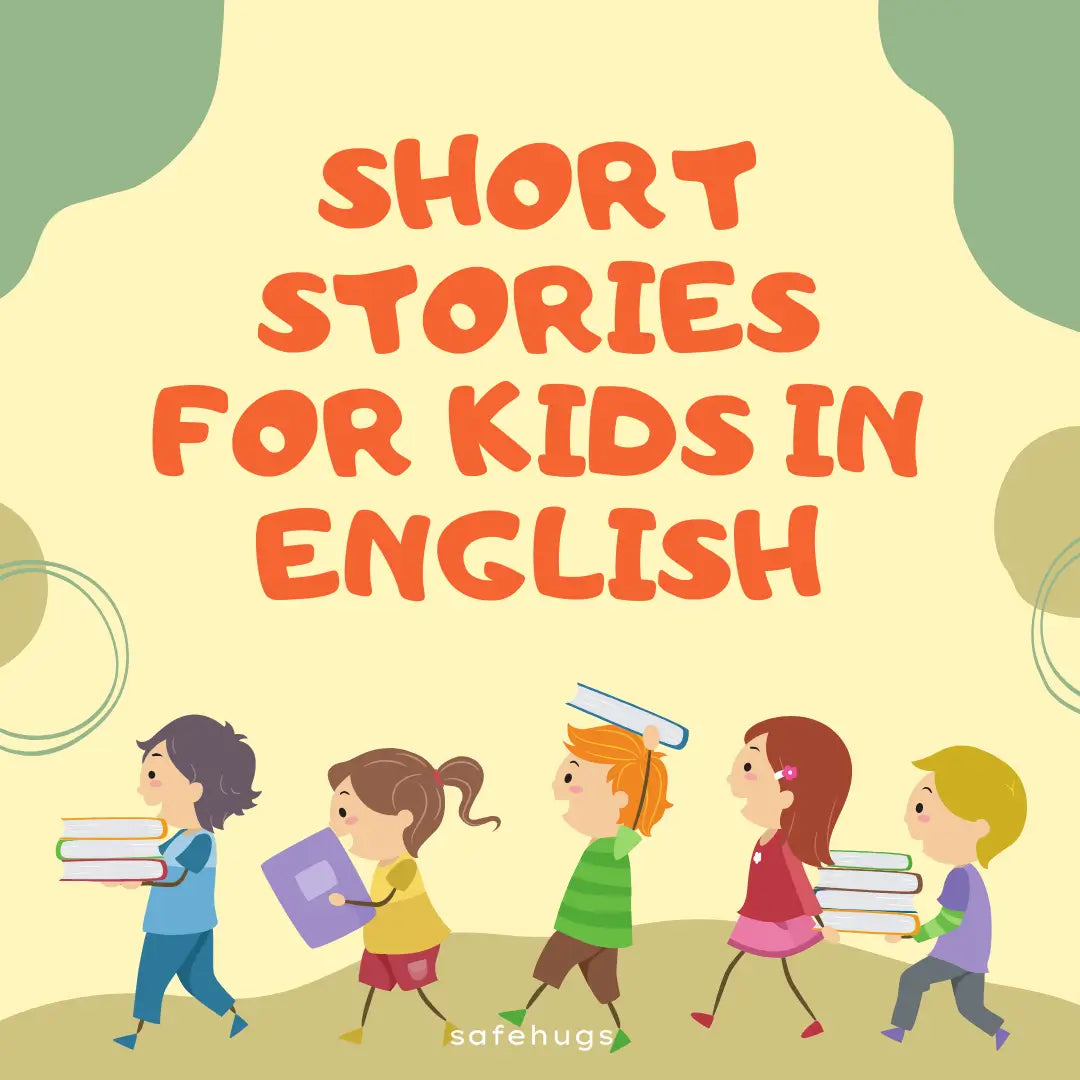Best AI Tools For Students In 2025 (With Projects)
Table of Contents
This blog explores the role of AI in education, its benefits for kids, and how to introduce AI concepts to children in fun and simple ways. It highlights the best AI tools for students and kids in 2025, including mostly free options, and provides exciting machine learning activities to encourage creativity.
Artificial Intelligence (AI) is totally changing the way we learn, making it more fun and personalized! Imagine having a tutor 24/7 and that they can help you with exactly what you need, anytime. That is what education is doing in education - turning learning more interesting and suited to each person’s pace. But how does AI actually help kids? What ways can a student or a kid utilize it? Let’s take a look!
What is Artificial Intelligence?
Think of it as machines becoming smart, kind of like how we learn from experience. AI allows computers and gadgets to recognize patterns, make decisions, and learn from data, just like our brains do. You see it all around you—whether it's voice assistants like Alexa or Siri or even self-driving cars. For kids, you can think of AI as a super-smart friend who learns from what it experiences and helps solve problems along the way!
Artificial Intelligence for School Students & Kids
AI is totally transforming how students and kids learn, making education more fun, personalized, and interactive! With AI-powered tutors and game-based learning, kids now have smart tools that boost creativity, critical thinking, and problem-solving skills. Whether it's breaking down tough concepts, improving language skills, or even exploring coding and robotics, AI is helping prepare young minds for a future full of technology.
Check out some of the coolest AI tools for students and kids to try out in 2025!
20 Best AI Tools for Students in 2025 (Mostly FREE)
AI tools are here to make studying easier, faster, and more personalized! They help students improve learning efficiency, create custom study plans, and break down difficult subjects. Here are 20 of the best AI-powered tools students can use in 2025:

-
ChatGPT – AI-powered writing assistant for essays, research, and explanations.
-
Grammarly – Smart AI writing assistant for grammar, spelling, and clarity improvements.
-
Notion AI – Helps with note-taking, summarization, and organizing study materials.
-
Khan Academy AI Tutor – Offers personalized tutoring in various subjects.
-
Google Socratic – Provides step-by-step explanations for homework problems.
-
Quizlet AI – Uses AI to create personalized quizzes and flashcards for effective studying.
-
Wolfram Alpha – AI-powered computational knowledge engine for solving complex math and science problems.
-
DreamBox – AI-driven adaptive learning platform for mathematics.
-
Otter.ai – Transcribes lectures and notes using AI voice recognition.
-
Perplexity AI – AI-based research assistant for gathering information quickly.
-
Speechify – Converts text into speech for audio-based learning.
-
Read Along by Google – AI-powered reading assistant for improving literacy skills.
-
Hemingway Editor – Helps students write clearly and concisely.
-
Edmentum Exact Path – AI-powered personalized learning paths for students.
-
Canva AI – AI-driven design tool for presentations and projects.
-
Turnitin AI – Checks plagiarism and improves writing quality with AI feedback.
-
Scite.ai – AI-powered tool that helps with academic research and citations.
-
Evernote AI – Smart note-taking app with AI-powered organization.
-
Google Bard – AI chatbot for research, explanations, and idea generation.
-
DeepL Translator – AI-powered language translation tool for multilingual learning.
These tools help students save time, enhance creativity, and improve their academic performance through AI-driven insights and recommendations.
10 Best AI Tools for Kids to Learn & Play
AI-powered tools for kids make learning fun and engaging through interactive games, storytelling, and hands-on activities. Here are some of the best AI-based tools for kids:

-
Scratch – AI-assisted coding platform for kids to create interactive stories and games.
-
Duolingo – AI-driven language learning app with gamified lessons.
-
Storybird – AI-powered storytelling platform that helps kids write and illustrate stories.
-
LightBot – AI-driven puzzle game that teaches coding and logical thinking.
-
Teachable Machine by Google – Allows kids to train their own AI models with real-world data.
-
Lego Mindstorms – Robotics and AI learning tool for hands-on STEM education.
-
Ozobot – Mini AI robot that teaches kids coding through interactive play.
-
AI Dungeon – AI-powered storytelling game where kids can create their own adventure.
-
AutoDraw by Google – AI-assisted drawing tool that helps kids create digital art.
-
Magenta by Google – AI-powered music composition tool for kids to explore creativity.
These AI tools make learning engaging, interactive, and fun while developing essential skills like problem-solving, coding, and creativity.
Glossary :
STEM Education – An educational focus on Science, Technology, Engineering, and Mathematics, where AI plays a major role in enhancing learning.
Role of AI in Education: How AI is Transforming Learning
AI is revolutionizing education by making learning smarter, more personalized, and interactive. It tailors lessons to each student’s needs, analyzing their strengths and weaknesses to ensure more effective learning. AI also helps students with real-time support through virtual tutors and chatbots, answering questions and guiding them through problem-solving anytime.
AI automates grading for objective assessments and offers feedback on written assignments, saving teachers time to focus on student engagement. It also assists students with disabilities by providing tools like speech-to-text services and personalized learning materials.
In the classroom, AI optimizes teaching with smart tools like automated attendance and real-time insights into student engagement, while language learning apps use AI to improve grammar, pronunciation, and comprehension. Additionally, AI-powered games make learning fun and interactive by adapting to each student's pace and progress.
Glossary :
Chatbots – AI-powered virtual assistants that answer questions and interact with students.
Benefits of AI for Kids’ Learning

-
Boosts Engagement & Creativity - AI-powered games and activities make learning fun and interactive, while creative tools let kids express themselves through drawing, music, and storytelling.
-
Develops Critical Thinking & Problem Solving - AI tools help kids improve their logic, decision-making, and strategic thinking by guiding them through puzzles and challenges.
-
Prepares for Future Careers - By introducing kids to coding, robotics, and data analysis, AI builds foundational skills for future STEM careers.
-
Personalized Learning & Support - AI adapts lessons to match each child’s pace, strengths, and learning style, providing extra resources when needed.
-
Enhances Language & Communication - AI-driven language apps improve vocabulary, pronunciation, and comprehension, making learning languages more engaging and effective.
-
Fosters Independence & Confidence - With AI-powered virtual assistants, kids can explore topics at their own pace, reducing learning anxiety and building confidence in their abilities.
-
Promotes Collaboration & Social Skills - AI encourages teamwork through group activities and multiplayer games, helping kids learn to communicate and collaborate with others.
How to Explain AI to a Child (Fun & Simple Ways!)
1. Use Real-Life Examples – Relate AI to things kids already use:
-
“AI is like YouTube recommending your favorite videos based on what you like to watch.”
-
“When you ask Alexa or Siri a question, that’s AI listening and responding.”
-
“AI is like a smart robot that learns from what we do and tries to help us.”
2. Play AI-Powered Games – Hands-on experience makes learning fun!
-
Try Google’s Quick, Draw! – A fun AI game where kids draw, and AI guesses what it is.
-
Curiosity Machine – An AI learning platform where kids can explore different AI projects.
-
Minecraft Education Edition – Teaches AI concepts through coding and problem-solving.
3. Unplugged AI Activities – Teach AI concepts without computers:
-
Sorting Game: Write words like “animals,” “fruits,” and “vehicles” on separate cards. Have kids sort objects into the correct category, just like AI categorizes information!
-
Guess the Pattern: AI learns from patterns. Show a sequence (like red, blue, red, blue) and ask, “What comes next?” This helps kids understand how AI predicts things.
4. Tell an AI Story – Make up a fun bedtime story about a friendly AI robot that learns new things and helps people, like a smart assistant in a magical world.
5. Explore AI in Everyday Life – Show how AI is all around us:
-
When Netflix suggests what to watch.
-
When Google helps finish your sentences.
-
When a chatbot answers questions on a website.
6. Introduce AI with a Drawing Activity – Ask kids to draw what they think a “smart robot” looks like and what it can do. This sparks curiosity and creativity about AI’s possibilities.
7. Teach with AI-Assisted Toys – AI-powered toys like Cozmo, Vector, and LEGO Mindstorms let kids interact with AI in a playful way.
8. Encourage Questions & Curiosity – Let kids ask questions like, “Can AI think like humans?” and discuss how AI learns but doesn’t have feelings like people.
Machine Learning Activities for Kids (Fun AI Projects!)

Beginner-Friendly AI Activities:
-
Train AI to Recognize Objects with Google’s Teachable Machine – Upload images and train a simple AI model to classify objects.
-
Create a Chatbot Using Scratch – Use Scratch’s AI extensions to design a chatbot that interacts with users.
-
AI-Powered Storytelling with Runway ML – Generate unique AI-assisted stories and animations.
-
Voice Recognition with Machine Learning (Speech-to-Text AI) – Teach kids how AI converts speech into text using tools like Google’s Speech API.
-
AI Drawing Game (AutoDraw by Google) – Watch AI predict and improve kids' sketches in real-time.
Glossary :
Machine Learning (ML) – A subset of AI where computers learn from data and improve their performance without being explicitly programmed.
Creative AI Projects for Kids:
-
AI-Powered Music Composition (Magenta by Google) – Experiment with AI-generated melodies and beats.
-
AI-Painted Artwork (Deep Dream Generator) – Create AI-assisted digital paintings.
-
Build a Joke-Telling AI (Chatbot in Dialogflow) – Teach AI to generate and tell jokes.
-
AI Animation & Character Design (MakeHuman + AI Animation Tools) – Develop animated characters using AI tools.
-
AI Story Generator (AI Dungeon, Storybird) – Craft interactive AI-generated adventure stories.
STEM-Based AI Experiments:
-
Train AI to Recognize Emotions (Face Recognition AI) – Teach an AI model to recognize different facial expressions.
-
Teach AI to Sort Colors (Machine Learning Classifier) – Train a simple AI model to classify colors.
-
AI-Powered Math Tutor (DreamBox Learning) – Use AI to solve math problems step by step.
-
DIY AI Traffic Light System (Using Raspberry Pi) – Create a simple AI-driven traffic light model.
-
AI-Based Language Translator (Google Translate API) – Experiment with building a basic AI translator.
Fun AI Games & Interactive Learning:
-
Play with Quick, Draw! (Google AI Experiment) – Watch AI guess what you’re drawing.
-
Teach an AI Pet (Machine Learning for Kids) – Train an AI pet to respond to different commands.
-
Create a Rock-Paper-Scissors AI (Python ML Project) – Code an AI that plays against humans.
-
AI-Driven Maze Solver (Scratch or Python) – Train an AI to navigate a maze.
-
Personalized AI Quiz Game (Kahoot + AI Tools) – Build an AI-based trivia game that adapts to players.
Advanced AI & Robotics Projects:
-
Program an AI Robot with LEGO Mindstorms – Teach a robot to complete simple AI-based tasks.
-
AI Face Detection with OpenCV (Python Project) – Train an AI model to recognize faces.
-
Speech-Controlled Robot (Arduino + AI Voice Recognition) – Build a robot that follows voice commands.
-
Self-Driving Car Simulation (Python & TensorFlow) – Create a simple AI-driven car simulation.
-
AI-Powered Weather Predictor (Machine Learning in Python) – Train AI to predict the weather based on past data.
How to Encourage Creativity in a Child Using AI

AI-Powered Storytelling & Art Apps
-
Deep Dream Generator – Transform photos into dreamlike AI-generated artwork.
-
Runway ML – Create AI-assisted animations and visual effects.
-
Storybird – Develop AI-generated stories with custom illustrations.
-
DALL·E – Generate unique AI-crafted images from text prompts.
-
AI Dungeon – An interactive AI-powered storytelling platform.
AI-Assisted Music Creation
-
Jukebox AI (OpenAI) – Create AI-generated songs and melodies.
-
Magenta by Google – Experiment with AI-generated music compositions.
-
AIVA (Artificial Intelligence Virtual Artist) – Compose AI-assisted orchestral music.
-
Melobytes – Convert text into AI-generated songs.
-
Boomy – Make original AI-powered music with a few clicks.
AI-Driven Game Development Tools
-
Unity ML-Agents – Introduce AI-driven characters in game development.
-
Scratch + AI Extensions – Create interactive AI-based games.
-
GAN Paint Studio – Use AI to design game environments and artwork.
-
AI Dungeon Game Creator – Generate text-based adventure games.
-
ChatGPT-Based NPCs – Program AI-powered characters in storytelling games.
AI for Creative Thinking & Innovation
-
Google AutoDraw – AI-enhanced doodling that refines kids' sketches.
-
This Person Does Not Exist – Generate AI-created characters for stories and comics.
-
AI-Powered Idea Generator – Use ChatGPT or Bard for brainstorming creative ideas.
-
Lumen5 – Create AI-assisted video storytelling and animations.
-
Teachable Machine – Train AI to recognize patterns and create unique AI-driven projects.
The Future of AI in Education

AI Tutors & Smart Learning Assistants
-
AI-Powered Tutors (Socratic, ChatGPT, Google Bard) – Personalized AI tutors that assist students 24/7.
-
Virtual Classrooms (Metaverse & AI Integration) – AI-driven virtual environments for immersive learning.
-
Automated Lesson Planning – AI tools helping teachers create customized lesson plans.
-
AI-Driven Assessment & Feedback – Smart grading systems providing instant feedback.
-
Adaptive Learning Systems (DreamBox, Squirrel AI) – AI that customizes lessons to fit individual learning styles.
Ethical Concerns: Balancing AI Use in Education
-
Data Privacy & Security – Ensuring student data is protected from misuse.
-
AI Bias in Learning Models – Preventing unfair algorithms in grading and content recommendations.
-
Human vs. AI Balance – Finding the right mix between AI and teacher involvement.
-
Over-Reliance on AI – Avoiding the loss of critical thinking skills due to excessive AI dependence.
-
AI Ethics Education – Teaching students about responsible AI use and ethical decision-making.
AI-Related Careers for Students
-
AI & Machine Learning Engineer – Building AI models and algorithms.
-
Data Scientist – Analyzing and interpreting AI-driven data.
-
Robotics Engineer – Designing AI-powered robots.
-
AI Ethics Consultant – Ensuring AI is used responsibly in different industries.
-
EdTech Developer – Creating AI-driven educational apps and platforms.
Artificial Intelligence Course for Students: Where to Start?
Beginner AI Courses
-
Coursera (AI for Everyone by Andrew Ng) – A great introduction to AI concepts.
-
Udemy (Artificial Intelligence for Beginners) – Simple AI and machine learning tutorials.
-
Google AI for Kids (Teachable Machine, AI Experiments) – Hands-on AI projects for kids.
-
EdX (Introduction to AI by Harvard & MIT) – University-level AI fundamentals.
-
AI For Kids by AI4K12 – Fun and interactive AI learning resources.
Coding Platforms for Kids
-
Scratch (MIT) – Visual programming that introduces AI and coding concepts.
-
Code.org (AI for Oceans, AI Lab) – Fun AI-based coding activities.
-
AI4K12 (AI & Machine Learning Projects) – AI learning framework for K-12 students.
-
Tynker (AI Coding & Robotics) – AI-powered game and app development for kids.
-
Google's Teachable Machine – Train AI models with images, sounds, and poses.
Best Resources to Start Learning AI Early
-
IBM Watson AI Education – Hands-on AI courses for young learners.
-
Khan Academy (Intro to Machine Learning) – Easy-to-follow AI lessons.
-
AI Club for Kids – Interactive AI programs designed for school students.
-
Microsoft Learn (AI for Beginners) – Basic AI concepts for students.
-
Google AI Experiments – Explore AI with creative and interactive experiments.
AI is shaping the future of education, making learning personalized and engaging. Encouraging kids to explore AI helps develop essential skills for the future. Start exploring AI-powered learning today and prepare for tomorrow’s world!
Related:
- Check out our blog on Scratch Programming Language and learn to code in a fun way.
FAQ'S
1. What is the best AI for kids?
The best AI tools for kids include Scratch (AI coding for beginners), Google Teachable Machine (fun AI experiments), Duolingo (AI-powered language learning), and ChatGPT (for answering questions and creative writing). These tools make learning engaging, interactive, and age-appropriate.
2. Can kids use AI?
Yes! Kids can use AI for learning, creativity, and problem-solving. Many AI-powered tools are designed specifically for children, helping them code, draw, learn new languages, and explore AI concepts in a safe and fun way. Parental supervision is recommended for younger kids.
3. Is AI safe for kids?
AI is generally safe for kids when used with parental guidance. It's important to choose child-friendly AI tools, enable privacy settings, and teach kids about responsible AI usage.
4. Can kids create their own AI projects?
Yes! Kids can create AI projects using beginner-friendly tools like Scratch, Google’s Teachable Machine, and MIT App Inventor to build chatbots, image recognition models, and fun AI experiments.
5. Is ChatGPT free?
Yes, ChatGPT has a free version that anyone can use, but it also offers a paid version (ChatGPT Plus) with advanced features, faster responses, and access to newer AI models. The free version is great for general learning, writing, and answering questions!





























